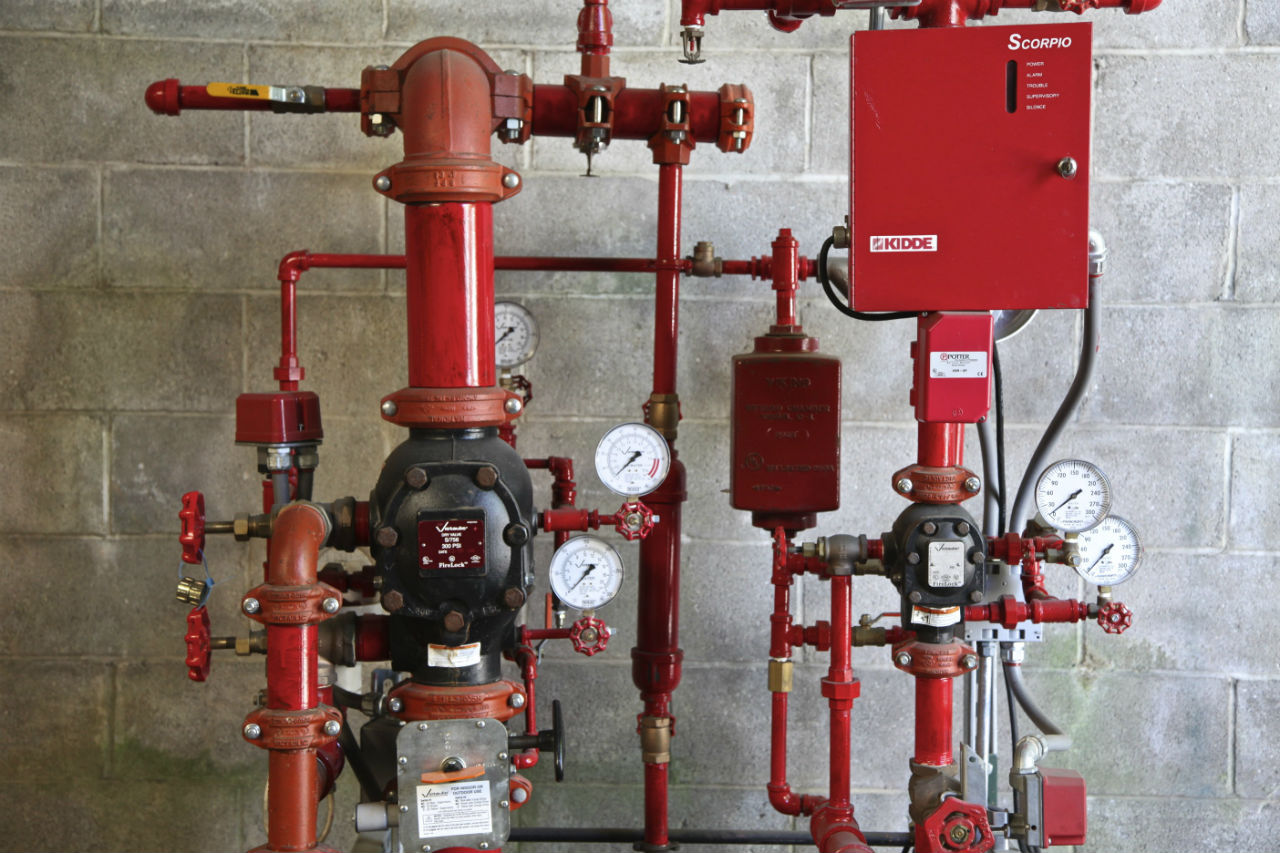How Dry Systems Operate
A typical dry system valve is designed in such a way that 1 psi of air can hold back 6 psi of water. In a fire event, the heat from the fire activates the sprinklers that are in the area once the surrounding temperature reaches a certain temperature to activate the sprinklers. Once the sprinklers activate, the air discharges from the sprinkler orifice first to release the air pressure, which will then trip the clapper-valve, allowing water to flow and fill the system.
In a dry system, the water does not discharge immediately. The entire system will fill with water and will then discharge from the activated sprinklers, allowing for the system to control the fire.
Inspection, Testing, & Maintenance
Typically, dry systems will have drum drips or low-point drains that need to be drained frequently, especially during winter and temperatures. Because dry systems are typically protecting areas that are more exposed to freezing temperatures, when they do trip and accumulate water, they will freeze quicker than another system that is located in a temperature controlled environment.
In addition to draining low point drains and the required inspections annually, each dry system must go through a Full Trip every three years versus the Short Trip that is performed the other two out of three years. The 5-year Internal Inspection should also be completed in addition to the 3-year Full Trip and annual inspection, testing, and maintenance tasks.
For Inspection, Testing, and Maintenance requirements, please contact the Sho-Me Fire Service Department.

